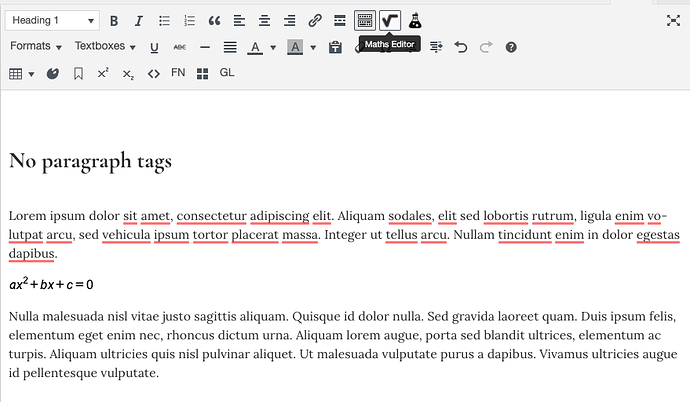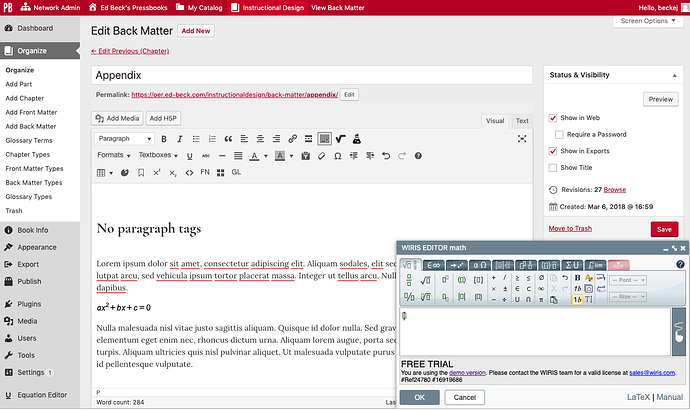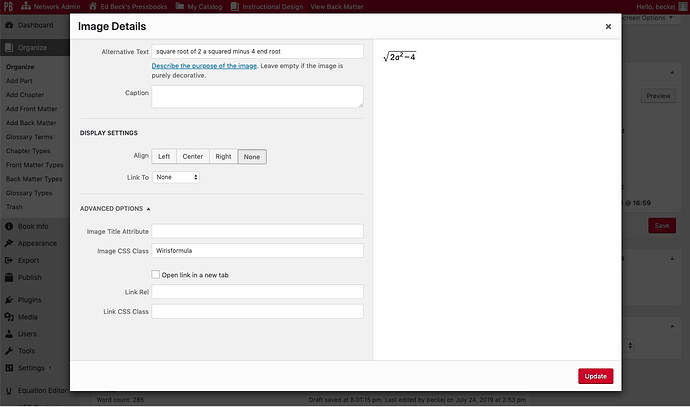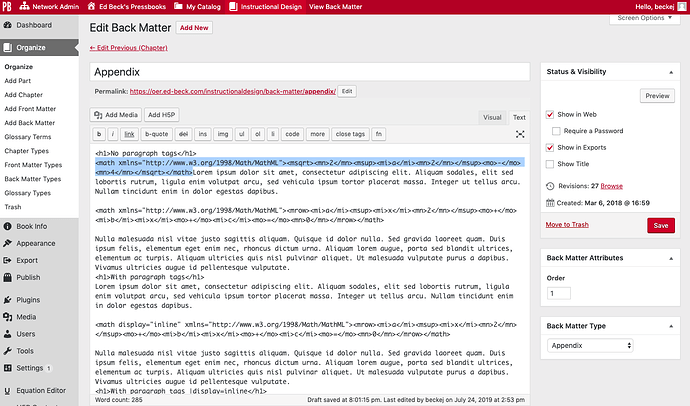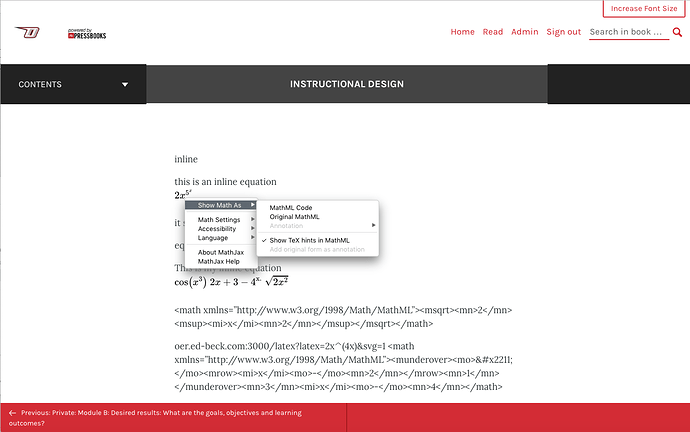Thanks for spending some time on this @dac.chartrand. We don’t have users that are using MathML yet, but SUNY has said for accessibility purposes they want things written in MathML whether that be for online, print, or otherwise.
In their draft document, they specifically ask us to look into MathType or equivalent for the generation of MathML. So I’ve been doing this two ways- Using the MathType Desktop app, you can write an equation, and then you can set the cut and paste preferences to output whatever format you want. LaTeX optimized for WordPress, LaTeX optimized for MathJax, and a few MathML options. I have 6 export options for MathML:
- MathML 2.0 (m namespace)
- MathML 2.0 (namespace attr)
- MathML 2.0 (no namespace)
- MathML 3.0 (m namespace)
- MathML 3.0 (namespace attr)
- MathML 3.0 (no namespace)
Edit: Actually, where it says configure for application or website one of the options is MathJax:MathML. I think that’s definitely what I should use.
MathType also has an integration for WordPress, and I started messing around with it a little. I installed it by using this plugin.
What’s interesting about this is that when the plugin is installed it renders nicely in WP Editor. I don’t know what kind of magic they baked in it to make that work, but letting faculty see what they are working on in the moment would be huge for us, plus it has a pretty simple editor that pops up, and when you close it, it has just placed MathML into your book. I only wish it was open source.
Image 1: Tiny MCE button
Image 2: Easy to use Editor
Image 3: Renders as an image in the editor screen, (including automatically generated alt text for accessible downloads across all formats
Image 4: But on the backend, it’s still just MathML. I think that’s good because…
Image 5: when I go to the web version of the book, it is still rendering in MathJax which I think has tools where you can go through an equation at your speed. (I think?)
My point in all this, is I think MathML is the way to go in the future if we can figure out these issues and convince WordPress to make changes upstream.
